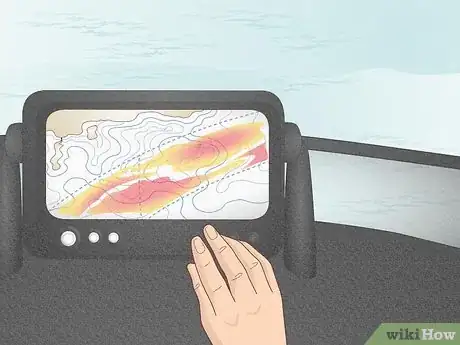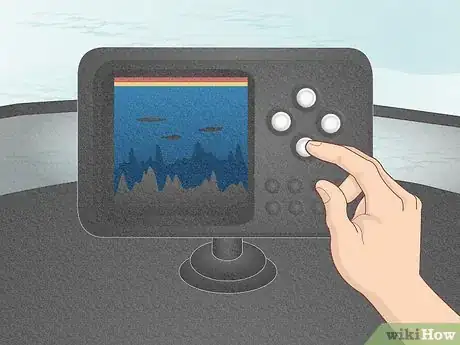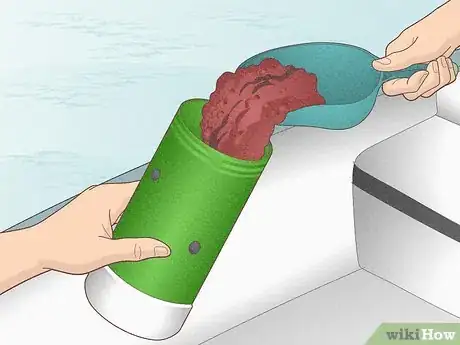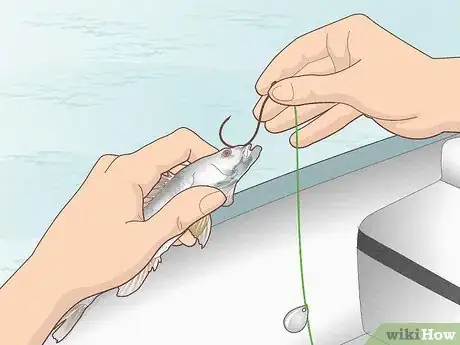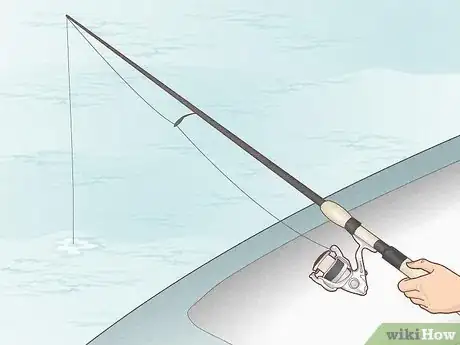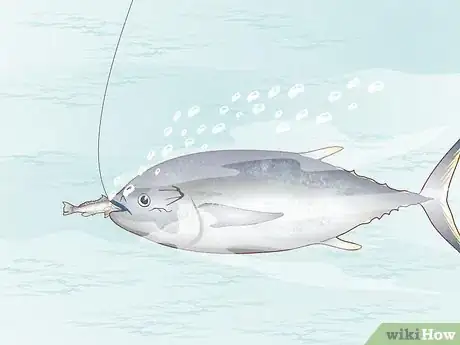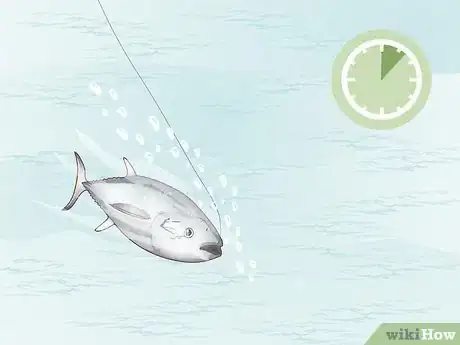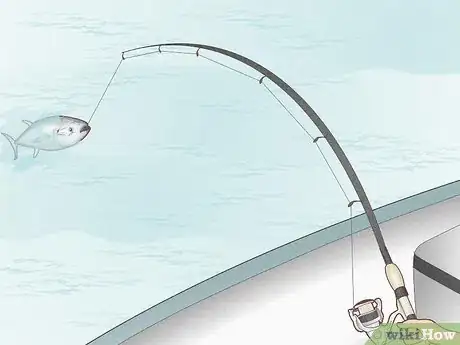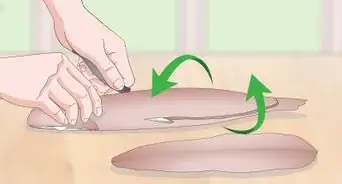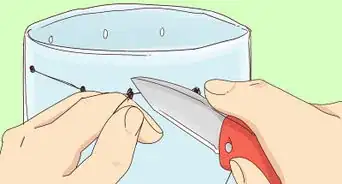X
wikiHow is a “wiki,” similar to Wikipedia, which means that many of our articles are co-written by multiple authors. To create this article, volunteer authors worked to edit and improve it over time.
This article has been viewed 57,614 times.
Learn more...
Tuna range in weight from 10 lb (4.5 kg) skipjacks to bluefins that weigh as much as 2,000 lb (907 kg). They are popular game fish because they fight fiercely when hooked. There are nearly 50 species of tuna found in all tropical and temperate oceans. Sport fisherman generally fish for tuna using a rod and reel. Novice anglers would benefit by taking a fishing charter and getting help from the crew.
Steps
-
1Find temperature gradients on ocean maps and fish on the warm sides. Tuna typically follow warm water currents, which may be just 5 mi (8 km) or more than 100 mi (161 km) offshore in different years.[1]
-
2Use an electronic fish finder to locate schools of tuna. After arriving at the warm water current frequented by tuna, the fish finder tells you where in the current the fish are and what their depth is.Advertisement
-
3Create a chum slick. Once you find a school of tuna, the chum slick brings them near the boat. Use a liquid chum dispenser and a fish-attracting oil formulated for attracting tuna. You can also chum with live bait.[2]
-
4Prepare your hook. You need to add the right size hook and egg sinker, a lead weight, to weigh the line down so the hook will sink when you pull out the line.[3]
- Bait your hook with anchovies, sardines, pieces of squid or other small fish. Each kind of bait has to be threaded on the hook in a specific way. Ask a more experienced angler to show you how to bait your hook.
- Add a feather jig to your hook. This is a lure that resembles a small fish. The feathers attached to the back mimic fins and a tail, and conceal the hook.
-
5Drop your hook. Pull out your line until your hook is at the same depth as the tuna and lock your reel.
-
6Wait for the tuna to strike the hook.[4]
- Check your bait after approximately 10 minutes if you don't get a bite. Your bait might have fallen off or been taken by a fish who didn't get hooked in the process.
- Begin jigging. Let the jig sink to the right depth, then pull it up. The fish will most likely strike the hook as it's sinking.
-
7Count to 7 before setting the hook. If you try to set the hook too soon, you may jerk it out of the tuna's mouth, letting it escape.
-
8Reel in the fish. Keep the proper tension on your line so it doesn't break. Pull the tuna toward you as you brace yourself against the rail, then reel in the slack.[5]
Advertisement
Community Q&A
-
QuestionWhich fish bait can I use to catch big tuna?
 Community AnswerAnchovies and sardines are the best bait to catch tuna. If you are going for the bigger ones, try mackerel.
Community AnswerAnchovies and sardines are the best bait to catch tuna. If you are going for the bigger ones, try mackerel.
Advertisement
Warnings
- While fighting a tuna can be exciting, it serves another purpose as well. You want this large, powerful fish to be tired when it gets to the boat so you can handle it without getting injured or having it pull you overboard into the water. Use a gaffing hook to subdue it before hauling it aboard.⧼thumbs_response⧽
Advertisement
References
- ↑ https://www.sstcharts.com/howtouse.shtml
- ↑ https://www.mossyoak.com/our-obsession/blogs/fishing/tuna-fishing-what-you-need-to-know-to-get-started
- ↑ https://mrc.virginia.gov/vswft/angler_guide/angler_web_catch.pdf
- ↑ https://www.mossyoak.com/our-obsession/blogs/fishing/tuna-fishing-what-you-need-to-know-to-get-started
- ↑ https://www.youtube.com/watch?v=vPm702bWl-g
About This Article
Advertisement
